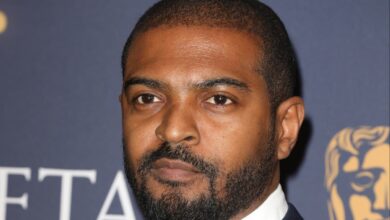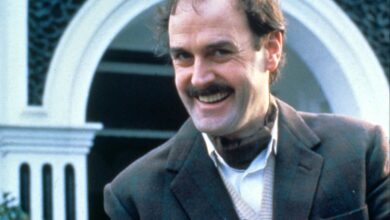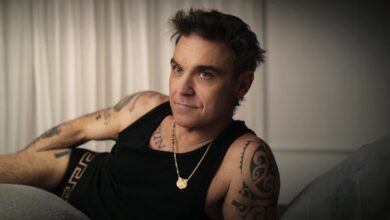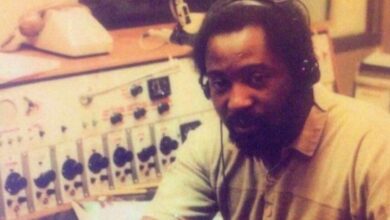Queer as Folk blew my closeted teenage mind in the Nineties – and the new reboot reaches even deeper

When the original British version of Queer as Folk premiered in February 1999, I was a painfully shy 15-year-old who hadn’t told anyone I was gay. I watched the first episode alone in my bedroom with the volume turned down so my parents wouldn’t know. I can remember feeling nervous all evening because I knew I was about to see something unapologetically homosexual: back then, even the show’s title felt edgy because the word “queer” had yet to be reclaimed by the LGBTQ+ community. But as soon as it burst onto the screen in an explosion of neon lights and thumping club beats, I was mesmerised by scenes of gay men dancing, laughing and getting laid. Canal Street in Manchester’s gay village, where the series was set, seemed like another world to the sleepy corner of south Buckinghamshire I called home.
The new US reboot of Queer as Folk, available in the UK from 1 July on Starzplay, begins in a similar swirl of hedonistic energy. Developed by Stephen Dunn, who previously made the quirky queer horror movie Closet Monster, it relocates the action from Manchester to “Nola”, as its characters call New Orleans, Louisiana. Where the OG Queer as Folk focused on three white cisgender gay guys – sweet supermarket manager Vince (Craig Kelly), flashy ad exec Stuart (Aidan Gillen) and wide-eyed teenager Nathan (Charlie Moloney) – Dunn’s reimagining is more diverse and inclusive.
The new Nathan is a non-binary aspiring drag queen called Mingus (Fin Argus). The loving but complex relationship between trans schoolteacher Ruthie (Jesse James Keitel) and Shar (CG), her partner who uses they/them pronouns, is explored with nuance and no sense of punches being pulled. And writer Ryan O’Connell, who plays Buffy-loving Julian, wasn’t exaggerating when he called the fourth episode “really disabled, gay and horny”.
There’s still lots of wonderfully unselfconscious sex. Episode one’s frank, funny bedroom encounter between Noah (Johnny Sibilly) and Daddius (Chris Renfro) brings me back to the original British pilot, which included a graphic depiction of rimming that blew my closeted teenage mind. “It was a very carefully selected scene, actually,” the show’s creator Russell T Davies told Vice many years later. “It was a sexual experience that a young boy wouldn’t have even imagined experiencing, because these kinds of visuals just weren’t available back then. He would have sat in his bedroom w***ing his head off thinking about men and sex and cumming, but probably would have never imagined being rimmed.” Davies’s hunch was pretty much spot-on.
Back in 1999 – a year before the age of consent for gay men was finally lowered to 16, the same as for everyone else – Queer as Folk’s sex-positive approach earned it the epithet “controversial”. But even then, I could tell there was an undercurrent of playfulness to the way Davies was challenging society’s prudishness. In episode two, when Vince talks about going to a straight club, he quips: “Can you believe it? They’ve got toilets in which no one’s ever had sex.” Predictably, the series was a lightning rod for homophobia. During an appearance on the BBC’s Breakfast News, former Daily Express journalist Peter Hitchens complained that “the whole thing seemed to me to be some form of cultural propaganda, designed to make us think that something that isn’t true, is – that is, that homosexuality is normal behaviour”.
Perhaps more surprisingly, Queer as Folk also prompted consternation from within the LGBTQ+ community. Davies has said that a press conference to promote the show became “volatile” when several gay journalists expressed frustration that his scripts didn’t explicitly mention the HIV/Aids epidemic. But, in a way, this perfectly reasonable criticism underlines just how vital Queer as Folk felt at the time. Because LGBTQ+ lives had so rarely been depicted on TV, Davies’s series was expected to cover too much ground. “I refused to let our lives be defined by disease, so I excluded it on purpose,” Davies wrote, reflecting on Queer as Folk in a 2021 op-ed about It’s a Sin, his game-changing drama that shone a spotlight, brilliantly, on the HIV/Aids crisis.
In fairness, Davies’s Queer as Folk never lacked depth or pathos: both Stuart and Vince grappled with the moral dilemma of being semi-closeted; another character died of a drug overdose. It also spawned an earlier, envelope-pushing US remake, which in its 2000 pilot featured the first sex scene between two men ever shown on American TV. Over five seasons, that series went on to explore issues as varied as same-sex adoption, gay-bashing and so-called “bug-chasing” (a phenomenon where HIV-negative people actively strive to become HIV-positive).
But the new reboot is prepared to reach even deeper, and right from the start. In episode one, soon after Mingus is rimmed in a club toilet by cute, cocky Brodie (Devin Way) – surely a nod to Davies’s series – something unspeakable happens. In heartrending scenes inspired by the 2016 Pulse shooting, where a lone gunman killed 49 people at an LGBTQ+ nightclub in Miami, an armed figure enters the club and opens fire. The collective trauma from this senseless tragedy is the lifeblood of the new Queer as Folk; its characters are processing grief, shock and anger, even – or especially – as they’re partying. The resulting show is one with a different tone from the British original: more mournful, even when it’s joyful and jubilant. And that’s exactly the kind of bold swing that has always made Queer as Folk so special.





